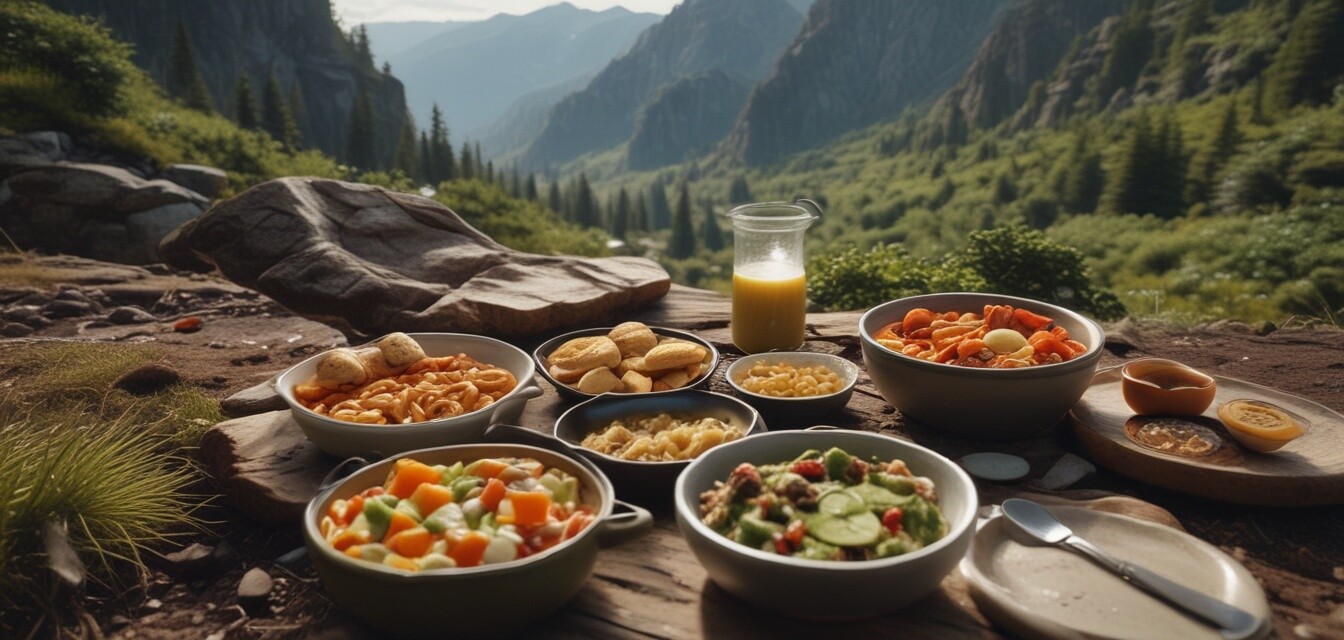
As an Amazon Associate, I earn from any qualifying purchases, at No Extra Cost to You.
Food trends for backpacking: Healthy eating on the trail
Key Takeaways
- Healthy eating on the trail is increasingly important for backpackers.
- Convenient and easily portable snacks are in demand.
- Sustainable food choices are becoming a priority for outdoor enthusiasts.
- Meal prepping and planning can enhance the backpacking experience.
Backpacking is not just about getting away from the hustle and bustle of everyday life; it’s also about enjoying the natural world while nourishing your body. Food trends in backpacking have evolved to prioritize health, convenience, and sustainability. This article explores current food trends that will make your backpacking experience more enjoyable and fulfilling.
Current food trends in backpacking
1. Nutritious meal ideas
Nutrition is key when you're embarking on a hiking expedition. Here are some popular meal ideas that provide energy and are easy to prepare:
| Meal Type | Ingredients | Preparation Method |
|---|---|---|
| Breakfast | Oatmeal, dried fruits, nuts | Combine with hot water and let it sit for a few minutes. |
| Lunch | Tortillas, hummus, assorted veggies | Spread hummus on tortillas and add veggies; roll up and eat. |
| Dinner | Quinoa, canned beans, spices | Cook quinoa and mix with beans and spices for flavor. |
2. Portable snacks
When hiking, it's crucial to have energy-boosting snacks on hand. Here are some top choices:
- Trail mix: A mix of nuts, seeds, dried fruits, and chocolate is perfect for energy.
- Protein bars: Select bars made from natural ingredients without added sugars.
- Beef jerky or plant-based jerky: A compact source of protein that’s satisfying.
- Fruit leathers: A convenient way to get your fruit intake while on the go.
3. Sustainable food choices
More backpackers are prioritizing sustainability when selecting food options. Consider these sustainable practices:
- Choosing organic ingredients reduces environmental impact.
- Opting for freeze-dried meals to minimize bulk and waste.
- Carrying reusable containers to avoid single-use packaging.
Meal prepping for backpacking
Meal prepping is a smart way to ensure you have delicious and nutritious food ready for your backpacking adventure. It's simple, effective, and can elevate your outdoor cooking experience.
How to meal prep for your trip
- Plan your meals for each day of your hike.
- Gather all ingredients and supplies needed.
- Prep ingredients at home, such as chopping vegetables or measuring out portions.
- Pack meals in airtight bags or containers to maintain freshness.
- Label each meal and snack for easy access on your adventure.
Portion control for optimal energy
Portion control plays a significant role in maintaining energy levels while backpacking. Ensuring you consume enough calories while not overpacking can be tricky. Here are some tips:
Tips for portion control
- Use measuring cups or a digital scale to portion out meals.
- Include a variety of food groups for balanced nutrition.
- Track your energy levels; adjust portions if you feel fatigued.
Conclusion
The food trends in backpacking emphasize a harmonious blend of health, convenience, and sustainability. Whether you're preparing for a day hike or a week-long trek, choosing nutritious meals and snacks will fuel your adventure while allowing you to connect with nature. By planning ahead and incorporating these current trends, you'll enhance both your trail experience and overall well-being.
Pros
- Healthy options ensure energy and stamina.
- Portable snacks make eating on the go easy.
- Sustainable choices help protect nature.
Cons
- Meal prepping can be time-consuming.
- Some nutritious options may be heavier than traditional foods.
- Finding certain ingredients can be challenging in remote areas.
Explore more about backpacking food
For more about finding the right gear for your backpacking trips, check out our Buying Guides. Interested in cooking gear specifically? Don’t miss our Cooking Gear section. Additionally, discover camping essentials in our Miscellaneous category or learn about navigation tools in Navigation & Safety.
